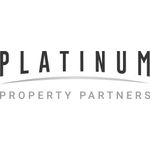Houses in Multiple Occupation, or HMOs as they are more commonly referred to in the property investment sector, remain one of the most profitable buy-to-let models around. The last time we checked, Platinum Property Partners HMOs achieved 40% more rental income than single tenancy buy-to-let properties.
Such high returns do come at a price though. Namely, a higher level of complexity surrounding legislation, sometimes a higher price tag and usually a lot more time investment on the landlord’s part.
One of the most critical steps in ensuring HMO investment success is buying the right property in the first place, but we have some bad news…
There is no such thing as the perfect property for an HMO
While we’d like to tell you that there is an exact specification to look for when sourcing your first or next HMO investment, the truth is that almost any type of property can be made to work as an HMO.
Of course, the location of the property is a key consideration, but physically, the world is your oyster. Within the Platinum Property Partners network, our landlords have purchased everything from Victorian terraced houses and new build properties to bungalows and commercial buildings and anything in between. The one and only type of property you should probably steer clear of is a leasehold apartment.
The shape and size of the property is far less important than first determining what you’re trying to achieve by investing in an HMO.
What are your HMO goals?
Every property investor is different and even though investing in HMOs is predominantly an income strategy, this might not be important to you with every property.
Some people might be focussed on the return on capital employed, because if they have too much money tied up in the house and therefore can’t use it to invest in additional HMOs, then the income potential becomes less relevant. Or perhaps you’re comfortable with the long game as is the case usually with the single tenancy buy-to-let model – capital growth.
The type of property you buy will ultimately depend on your goals. If income is your goal then you’ll need to look at properties where you can maximise the number of rentable rooms. You’ll also need to consider the size of the bedrooms as different tenants have different needs. You might think squeezing and en-suite bathroom in is a good idea, but second or third generation sharers have a lot of stuff and value space.
And maybe it’s not just the amount of income you can achieve, but the speed at which you’ll be able to draw that income. In this scenario, you may not want to buy a property that will take months to convert into an HMO.
If value for money is the aim of the game, you might need to look at something that needs a lot of work but that will achieve a great uplift in development profits. Likewise, if property is expensive in your investment location and houses that would comfortably be home to six or seven tenants are hard to come by, then you may have to settle at four or five bedrooms.
Knowing your HMO goals will make it so much easier to come up with a shortlist of properties to view. And so here comes our final lesson for the day…
Book block viewings of potential HMO properties
The biggest challenge when it comes to sourcing a potential HMO investment property is speed and momentum. If you spend too long looking for what you think is the perfect property, you’ll quickly find that it’s no longer available.
Broaden your horizons and never disregard a property’s potential as an HMO without physically viewing it. You can’t see from a simple property listing where the drainage is or whether a wall could be knocked down to make a room bigger.
Book as many viewings as you can for one day and take note of price, number of reception rooms, current room and plot sizes, existing covenants, extension potential and available parking. Then do the numbers and make an offer.

